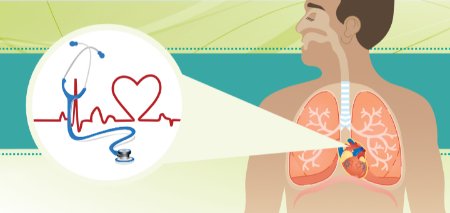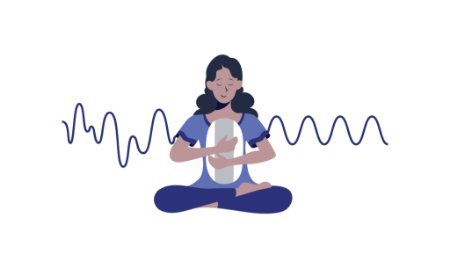
Resonant breathing is a powerful technique for calming the mind and body.
Resonant Breathing: A Bridge Between Body and Mind
Tired of constant stress at work? Looking for a natural way to improve your sleep quality? Resonant breathing might be the answer. This simple yet powerful technique, by synchronizing breathing with heart rate, helps you experience calmness in your daily life.
But what is resonant breathing and how does it work? This method goes beyond just a simple breathing exercise. By creating harmony between the mind and body, it helps you cope with stress, improve focus, and even enhance athletic performance. Whether you are a professional athlete or someone looking to improve your quality of life, resonant breathing can be beneficial for you.

By synchronizing breathing, heart rate, and brain activities, you achieve relaxation.
The Autonomic Nervous System and Breathing
Breathing speaks our body language. Just as our facial expressions and body movements convey our emotions to others, breathing tells us and our bodies what state we are in. When a baby is frightened, their breathing becomes rapid, while when calm, the breathing is slow and deep. This is because our autonomic nervous system, which regulates many of our bodily functions, is directly connected to breathing.
The autonomic nervous system has two main parts: one (sympathetic) prepares us to face danger, and the other (parasympathetic) helps the body to relax and rejuvenate. When we feel danger, the sympathetic part is activated, increasing our heart rate and breathing. However, when we are calm, the parasympathetic part becomes active, slowing down our heart rate and breathing.
The good news is that we can influence these systems by changing our breath. In other words, through specific breathing exercises, we can activate the parasympathetic system, helping us feel more relaxed. This helps us better cope with stress and anxiety, improving our quality of life.
But the question is, how can we effectively use breathing for our relaxation? Next, we will explore different breathing techniques and their benefits.
Resonant Breathing: The Key to Synchronizing Body and Mind
Every breath we take not only brings oxygen into our lungs but also affects our heart, brain, and the entire nervous system. When we breathe, the pressure inside the chest changes, and these changes in turn affect our heart rate and blood pressure. This complex relationship between breathing and the cardiovascular system forms the basis of a powerful technique known as “resonant breathing.”
Normally, when we breathe, our heart rate slightly increases during inhalation and decreases during exhalation. These natural fluctuations in heart rate help us react to environmental changes. However, what matters is the amount of these fluctuations. The difference between the highest and lowest heart rates in a given time period is known as heart rate variability (HRV). High HRV indicates better health of the nervous system and the body’s greater ability to cope with stress.
Resonant breathing helps us maximize this natural synchronization. By regulating the breathing rate to about 4 to 7 breaths per minute, we can achieve a state where heart rate, blood pressure, and breathing oscillate harmoniously together. This coordination leads to a deep state of relaxation and balance in the body.

Resonant breathing reduces stress and improves sleep quality.
Long-term Benefits of Practicing Resonant Breathing
Resonant breathing is a simple yet powerful technique that can transform your life. By synchronizing breathing, heart rate, and blood pressure, it helps your body and mind achieve a state of calmness and balance. With regular practice of resonant breathing, you can enjoy the following benefits:
• Reduced stress and anxiety: Resonant breathing helps you handle stress and feel more calm.
• Improved sleep quality: Better and deeper sleep is another important benefit of this technique.
• Enhanced focus and productivity: By practicing resonant breathing, you can improve your concentration and boost your productivity.
• Strengthened immune system: Resonant breathing helps boost the immune system and increase resistance to illnesses.
• Cardiac and vascular health improvement: This technique can help lower blood pressure and enhance heart health.
• Increased energy levels: With resonant breathing, you will feel more energized and refreshed.
How does resonant breathing work?
When you breathe at an appropriate speed and depth, messages are sent to your brain that signal your body to calm down. This process leads to reduced heart rate, blood pressure, and muscle tension. Over time, regular practice of resonant breathing can strengthen your nervous system and help you cope better with life’s stresses and challenges.
How to Practice Resonant Breathing?
This slow breathing exercise is one of the simplest techniques. It involves about five and a half complete breaths per minute, with each inhalation and exhalation lasting about five and a half seconds. This pace allows the heart, lungs, and nervous system to reach a state of calmness and coordination.
1. Sit up straight with a relaxed belly; exhale.
2. Inhale gently for about five and a half seconds, expanding your belly outward to fill the lower part of your lungs.
3. Without pausing, exhale for five and a half seconds until your belly and lungs are emptied. Each breath should feel like a circle.
4. Repeat at least 10 times, and more if possible.

Resonant breathing is a powerful tool for stress management.
Frequently Asked Questions about Resonant Breathing
1. How long should I practice resonant breathing?
The ideal duration for practicing resonant breathing depends on your goals and preferences. Even a few minutes of practice each day can be beneficial. However, for better results, try to dedicate at least 10 to 15 minutes each day to this practice.
2. When is the best time to practice resonant breathing?
You can practice resonant breathing any time you feel stress, anxiety, or restlessness. Some people prefer to do this exercise in the mornings after waking up or before going to bed. You can also use this technique throughout the day to calm your mind and improve focus.
3. Is there any age limit for practicing resonant breathing?
Resonant breathing is generally suitable for people of all ages. However, if you have a specific medical condition, it is best to consult your doctor before starting this practice.
4. Does resonant breathing have any side effects?
Resonant breathing is generally safe and has no side effects. However, if you feel dizzy or uncomfortable while practicing, stop and consult a doctor.
5. What is the difference between deep breathing and resonant breathing?
Deep breathing and resonant breathing are both breathing techniques but have differences. Deep breathing typically involves inhaling deeply through the nose and exhaling through the mouth, whereas resonant breathing focuses on a specific breathing pattern that is synchronized with heart rate and brain activity.
Final Thoughts
Resonant breathing is a simple yet powerful technique for relaxation and health improvement. By synchronizing breathing, heart rate, and brain activities, this method helps reduce stress, improve sleep quality, enhance concentration, and strengthen the immune system. Regular practice of resonant breathing can be beneficial for individuals of all ages and generally has no specific side effects. However, for individuals with specific health issues, consulting a doctor before starting this practice is advisable. This technique can be performed anywhere and at any time without the need for special equipment. With consistent practice and patience, you can enjoy the many benefits of resonant breathing.
Compiled by:Health Section of SelMagz







